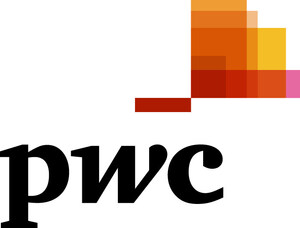WASHINGTON, June 21, 2011 /PRNewswire/ -- Digital transformation is connecting billions of people worldwide, empowering consumers and enabling consumer packaged goods (CPG) companies to manage the enterprise more effectively and efficiently to drive growth, according to Thriving in a Connected World, the Grocery Manufacturers Association (GMA) and PwC US 2011 Food, Beverage, and Consumer Products financial performance report released today. Now in its 15th year, the report includes analyses based on public information from 148 companies in the food, beverage and consumer products sector.
(Logo: http://photos.prnewswire.com/prnh/20100917/NY66894LOGO)
Despite rising commodity costs, the CPG industry is now in recovery mode with companies focused on their growth agenda and looking to international expansion as an opportunity to enhance both the top and bottom lines, the report found. The value of shipments in the CPG industry rose 6 percent to almost $124 billion in 2010 versus the prior year. Across the board, financial performance generally improved over 2009, with the manufacturing sector achieving strong median one-year shareholder returns of 15 percent. In addition, median earnings before interest and taxes (EBIT) growth overall improved from 4.3 percent to 12.9 percent.
According to the report, major opportunities for CPG companies are being created with digital technologies.
"CPG companies of all sizes harnessed digital technologies in the past few years to become more productive and efficient," said GMA President and CEO Pamela G. Bailey. "This study shows how food, beverage and consumer products manufacturers are leveraging innovation to optimize service to consumers and trading partners."
Business mobility has been shown to boost productivity in sales, supply chains, distribution centers and stores, as well as to contribute to individual productivity. To determine the best use of mobile devices across the workforce, the report suggests that workforce productivity should be viewed through three lenses: mobility on the floor where workers use their digital devices for instant information, in the field where mobile employees can make decisions on the spot with their devices, and in flight where sales representatives, who historically travelled to each location to analyze performance, now use mobile technology to monitor activity, thereby increasing productivity. The report notes that as devices and wireless data networks grow, rich multimedia capabilities will continue to be added to business work flows and businesses will continue to capitalize on the opportunities mobile devices create within the workforce.
"Today's consumers are more empowered with greater control of their shopping choices with the growing array of digital technologies like smart phones, tablets and social media. And they aren't shy about posting their feelings online about products, where they literally are handing over reams of potential insights that can create a tremendous opportunity for CPG companies that can find the patterns in the noise," said Susan McPartlin, PwC's Retail and Consumer Industry Leader. "Just a few years ago, digital information meant one thing to senior executives – risk. However, companies are no longer just thinking 'defense,' they are using the digital data to advance their competitive position, help improve all aspects of operations and get smarter about international expansion plans."
To this point, the report notes that currently, CPG companies lack detailed insights about consumers in China and other emerging markets. Many of the norms taken for granted in developed markets -- point-of-sale SKU numbers, predictable pricing models, even accurate information about how to reach a store or when it will be open -- cannot be assumed in emerging markets. According to the survey, connecting with consumers on their own digital terms will allow companies to learn how these markets work.
For the analysis, the GMA and PwC examined a variety of financial metrics to see which common characteristics link the CPG companies that performed best during the slow economic environment of 2010, and how those characteristics have changed during the past five years. The 148 CPG companies reviewed were sorted into performance quartiles and scored based on their relative performance across three metrics: economic profit spread, return on assets and free cash flow relative to sales.
Each group returned to growth in 2010 (2.9 percent for top performers and 1.5 percent for the bottom quartile), with the top quartile showing less volatility year-to-year and achieving more reliable sales growth over the long run. Most of the sales growth came organically and from acquisitions, with the strongest organic growth coming from emerging markets in Latin America and Asia. The report also found that top performing CPG companies are both generating and hoarding more cash than poorer performers – 18 percent cash flow to sales for the top performers versus 3.8 percent for the bottom quartile. Additionally, top performers paid out an average of four times more dividends per share during 2010 than the bottom performers.
Additional key findings from Thriving in a Connected World include:
- EBIT growth for the bottom quartile improved significantly from a negative 25 percent to negative one percent.
- Free cash flow as a percentage of net sales continues to remain generally strong across the industry, contributing to shareholder returns in the form of dividend payments.
- Underlying the strong overall performance was solid performance in margin improvement as well as liquidity management.
- Median selling, general, and administrative (SG&A) expense was nearly flat from the previous year.
- For the Household Products (HHP) sector, there was significant improvement in EBIT growth to 15.4 percent. This improvement took place in spite of a small reduction in median gross margin from 49.5 percent to 47.5 percent.
- The Food sector had a strong year; median sales per employee grew nearly 10 percent and the median cash conversion cycle fell from 50.9 days to 45.8 days. However, there were signs of a challenging environment versus other sectors. Net sales growth did not improve to the extent that it did for Beverage and HHP sectors as consumers continued to trade down in the sector on a regular basis.
- The Beverage sector continued overall strong performance with significant improvements in net sales growth, gross margin (43.1 percent to 47.1 percent), and SG&A expense (29.7 percent to 27.7 percent), which were able to offset a very poor year from a cash conversion perspective (rising from 38.0 days to 46.1 days).
"Our analysis found that CPG companies were hard pressed to generate overall sales growth in 2010; however, some companies still managed to produce very healthy margins, free cash flow and other financial results. They made good progress building their brands in those fast-emerging markets, and were able to balance long-term investment with smart cost management in ways that still generated substantial dividends for shareholders," added Lisa Feigen Dugal, PwC's North American Advisory Retail and Consumer Industry Leader.
"Yet CPG executives are guardedly optimistic, despite a fragile economy, high unemployment and volatile commodity prices. Companies should aggressively take these risks into account in their planning processes to better position themselves to take advantage of growth prospects that await them at home and abroad," she noted.
Thriving in a Connected World will be presented via webcast by PwC and GMA on Wednesday, June 29 at 1:30 p.m. EDT (click here for registration information: http://www.meetpwc.com/2011PwCGMACompanyWebcast). For an electronic copy of the complete report, visit: www.pwc.com/us/retailandconsumer or www.gmaonline.org.
Additional Report Highlights
Thriving in a Connected World contains articles on the following key industry trends:
Business Mobility and the Prospects for Leaps in Productivity
The accelerating rate of mobile device adoption is spurring business mobility and creating tremendous opportunities for boosting productivity across the entire CPG value chain.
Maximizing Multichannel Growth
Brick-and-mortar stores haven't gone away, but consumer product manufacturers and retailers alike recognize the need for multichannel strategies that optimize high-growth opportunities in the digital channels.
Collaborate to Keep Up With Digitally Empowered Consumers
Will companies match consumers' demand for more information and product where and when they want it? Matching this demand will require collecting, sharing and analyzing data together. Retailers and suppliers can no longer afford to remain apart because they worry about the accuracy and security of shared data.
Roiling Commodities: Protecting Value by Managing Risk
Prudent companies look at risk systematically with a holistic risk management framework that considers operational, financial and strategic levers.
International Markets – the Challenges of Developing Consumer Insight
CPGs seeking substantial growth and focusing on these rapidly evolving, fast-growing markets to ensure that they are targeting the right markets with the right messages.
China: Navigating the 12th Five Year Plan
A strategy developed through multinational and Chinese lenses creates the need for companies to change their operating models in China.
In Sustainability Reporting, Assurance of Data Gains Momentum
PwC's survey of 64 large CPG companies ($4 billion or more in annual revenues) found that 57 (or 89 percent) are sustainability reporters (i.e. they issue a formal sustainability report), up from only 51 percent in 2010.
Green Products: Applying ROI Discipline to Targeting Business Opportunities
Companies should apply ROI discipline to identify and prioritize consumer sustainability demands and preferences that drive purchase decisions.
Safety First, Again: New Risks, New Legislation for Food Companies
Companies should respond to the Food Safety Modernization Act (FSMA) by assessing their current food safety policies, evaluating their suppliers' safety programs and establishing a food safety/FSMA steering committee.
Tax Reform on the Agenda
Fundamental reform of the U.S. tax system is now working its way to the front and center in Congress and the White House. Even if a major reform package does not get voted on this year, CPG companies should start to engage in the political process now, so they can influence the eventual outcome.
About the Grocery Manufacturers Association
Based in Washington, D.C., the Grocery Manufacturers Association is the voice of more than 300 leading food, beverage and consumer product companies that sustain and enhance the quality of life for hundreds of millions of people in the United States and around the globe.
Founded in 1908, GMA is an active, vocal advocate for its member companies and a trusted source of information about the industry and the products consumers rely on and enjoy every day. The association and its member companies are committed to meeting the needs of consumers through product innovation, responsible business practices and effective public policy solutions developed through a genuine partnership with policymakers and other stakeholders.
In keeping with its founding principles, GMA helps its members produce safe products through a strong and ongoing commitment to scientific research, testing and evaluation and to providing consumers with the products, tools and information they need to achieve a healthy diet and an active lifestyle.
The food, beverage and consumer packaged goods industry in the United States generates sales of $2.1 trillion annually, employs 14 million workers and contributes $1 trillion in added value to the economy every year. For more information, visit the GMA Web site at www.gmaonline.org.
PwC firms provide industry-focused assurance, tax and advisory services to enhance value for their clients. More than 161,000 people in 154 countries in firms across the PwC network share their thinking, experience and solutions to develop fresh perspectives and practical advice. See www.pwc.com for more information.
© 2011 PwC. All rights reserved. "PwC" and "PwC US" refer to PricewaterhouseCoopers LLP, a Delaware limited liability partnership, which is a member firm of PricewaterhouseCoopers International Limited, each member firm of which is a separate legal entity.
SOURCE PwC
WANT YOUR COMPANY'S NEWS FEATURED ON PRNEWSWIRE.COM?
Newsrooms &
Influencers
Digital Media
Outlets
Journalists
Opted In





Share this article